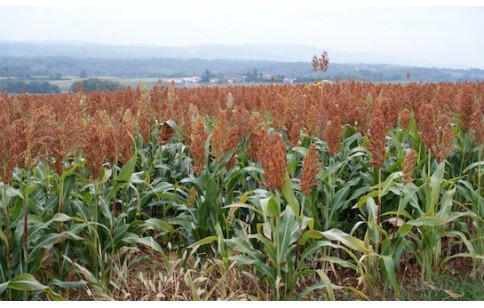- Code : #1102 S 20 mg
- Formula : C₁₅H₁₀O₅
- CAS : 520-36-5
Sorghum bicolor
Sorghum bicolor, “Sorghum” or “Great millet” in English, “Sorgo” or “Sorgho commun” in French, belongs to the Poaceae botanical family. Probably native to Egypt and Africa and cultivated worldwide today, it is a herb that can be 3 to 5 m tall.
It is the 5th world cultivated cereal and a main food resource for many populations.
Sorghum-based foods, teas, beers, and extracts are used in traditional medicine. Research on Sorghum bicolor shows that it contributes to anti-inflammatory effects, and supports its ethnomedicinal use in the treatment of anaemia. Sorghum extracts have a strong chemoprotective potential and inhibit proliferation of gastrointestinal cancer cell lines
Sorghum’s main constituents are carbohydrate, alakaloids, tannins, saponins, phlobatannin, flavonoids and cardiac glucosides. Sorghum species are known to have a high content of antioxidants, including simple phenolic acids, as well as polyphenols, particularly 3-deoxyanthocyanidins, such as luteolinidin and apigenidin. Dhurrin, a cyanoglycoside, is also a characteristic substance.

- Code : #0921 S 10 mg
- Formula : C₁₅H₁₁O₄Cl
- CAS : 1151-98-0
- Code : #7204 5 mg
- Formula : C₁₄H₁₇NO₇
- CAS : 499-20-7
- Code : #0979 S 20 mg
- Formula : C₁₅H₁₄O₇
- CAS : 970-74-1
- Code : #0925 S 5 mg
- Formula : C₁₅H₁₁O₅Cl
- CAS : 1154-78-5






